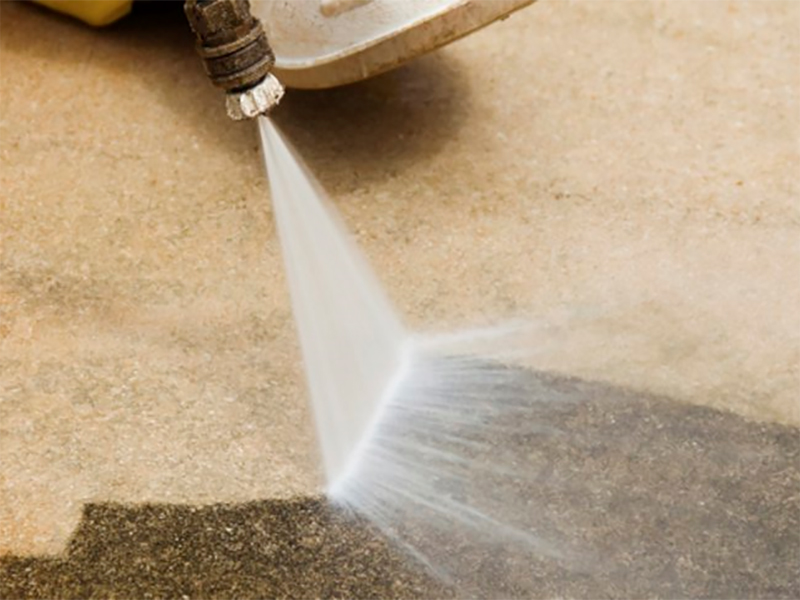https://www.realestate.com.au/property-apartment-vic-sandringham-128416666 Live inside-out high above it all with al fresco entertaining, 5 Star resort facilities and...Read More→

Quality photographs can help to make a favourable first impression when buyers are searching the internet or the papers, and they can certainly help your property stand out from your competitors. So it is very important to prepare your property carefully and ensure that due care is taken when photographing your home.
Over the years we have found that taking the time to get the best possible photographic images can make a real difference to the results each vendor achieves. This is why our team at Ian Reid Vendor Advocates take the time to screen every property image before approving them for use.
Every property is different, but there are a few key tips that apply to every situation when photographing your home. They include:
If you’re looking for even more tips on how to avoid making expensive mistakes when you sell, you’ll find lots of them in our FREE booklet “Fatal Real Estate Traps Exposed”. So why not download a free copy while you’re here?

For those who like to watch the property market closely, the market segment that recorded the largest drop was new apartments, where building approvals fell 17.2 per cent in August. This represented a year-on-year drop of 23.4 per cent when compared with August 2017. The ABS reported that approvals for standalone houses showed a gentler drop of 1.9 per cent in August and 4.4 per cent year-on-year.
Whilst any fall in building approvals is never good news for the overall economy, this trend is particularly concerning when you consider the rate that our population is growing, as we pointed out in OUR POST LAST MONTH.
Interestingly, an analysis of this data by economists at the ANZ Bank has revealed that unlike past falls in housing approvals, this latest drop has been driven by a tightening of the credit market rather than the usual lifting of interest rates.
If this proves to be the case, then we see this trend continuing for some time to come. A Senior Economist at the ANZ has been quoted as saying, “If we assume no easing of the credit tightening until at least after the royal commission delivers its final report in February 2019, then it seems reasonable to expect that dwelling approvals could be off as much as 15–20 per cent in trend terms by early next year.”
In the longer term, it is worth remembering that any fall in residential construction will cause an even lower level of supply of housing in a market where demand continues to grow as a result of an increasing population…Concerns about the affordability of housing look likely to continue.
If you have questions about how your own local property market is been performing, or you are wondering how to maximise the price you achieve when you sell in the current market, don’t hesitate to give Floris Antonides a call on 0418 504 915. You can also get a FREE copy of our booklet, Fatal Real Estate Traps Exposed, while you’re here on our website.

Should they buy their next property first, then sell their existing home, or vice versa? The fact is that there is no straightforward answer that will suit every person, as the answer will depend very much on your own personal circumstances and preferences. But, having said that, here’s an outline of the relative pros and cons of each option so you can make your own informed decision.
As a general guide, we tend to find that in a ‘normal’ property market most people prefer to sell their existing home first, then purchase their next home afterwards. This approach gives you some certainty as to how much your current property is worth, and therefore what your budget will be for the next property. It also gives you certainty on the timing of the settlement for your current home so that you can aim to move just once.
The downside to this approach is that if you have difficulty finding and securing your next home, you may end up having to find temporary accommodation in between settlements, which will mean making two moves rather than one.
This approach was certainly more popular in recent years, due mainly to the strength of buyer demand. With more buyers than sellers, many people knew they would be able to sell their current property with relative ease…but securing their next home was more of a challenge!
However, buying before you sell in the current market conditions can be more financially complex, particularly if you do not have access to the full purchase price of your new home without relying on the proceeds of the sale of your existing home.
Buying first may mean that you find yourself under extra pressure to sell your existing property by a set date, meaning you may be under pressure to accept a lesser offer than you would like. In this situation you may also need bridging finance, which can be a more expensive form of loan than your standard home loan.
One option if you are considering buying first is to make your purchase conditional on the sale of your existing home. However, in many cases the sellers of your new home may not wish to accept a conditional offer, so it will put you at a disadvantage in any negotiations.
Clearly, if your peace of mind is an important element to your decision, you may prefer to sell your existing home first. But as we all know, it’s hard to predict when we might stumble across the ‘dream home’ that we simply “have to buy”.
Don’t forget that if you are at all unsure about the right way to proceed when planning a move, we are always happy to provide you with sound advice and assistance, and our service won’t cost a cent more than having to deal direct with an agent.
You can call Floris Antonides anytime on 0418 504 915.

While we are not in the business of providing advice on home loans, it is a topic that does crop up when advising senior home owners on their property dealings.
With this in mind, we wanted remind readers that whilst a reverse mortgage can be a helpful form of financing for retirees who are “asset rich but cash poor”, the recent Royal Commission into the financial industry has reminded many Australians of some of the shortcomings of this form of home loan.
A reverse mortgage is a type of mortgage loan that is specifically designed for pensioners and retirees. Sometimes referred to as a senior’s loan, a reverse mortgage enables homeowners aged over 60 to convert the equity in their property into cash. The loan is secured by a mortgage over the borrower’s house and whilst interest is charged just as with any other form of loan, you don’t have to make repayments while you live in your home. Instead, the interest compounds over time and is added to your loan balance. Repayment of the loan only occurs when you sell your home, you move to an aged care home or you pass away, but you are usually allowed to make voluntary repayments if you wish.
Since September 2012, laws have been in place to protect anyone with a reverse mortgage from owing the lender more than the property is worth…a situation known as negative equity. However, this is still a concern if you took out a reverse mortgage prior to that date.
Generally speaking, the main issues with taking out a reverse mortgage today are:
Clearly, there are several reasons to tread carefully where a reverse mortgage is concerned.
As we all know, a number of financial products have come under review as the Royal Commission continues to examine recent lending practise. Indeed, the Australian Securities and Investments Commission (ASIC) has suggested that lending standards on reverse mortgages have not always been fair for elderly borrowers.
ASIC has said that borrowers do not have sufficient understanding of the risks and future costs of their loans, along with the impact on their ability to fund their needs in the future. The Deputy Chairman of ASIC, Peter Kell, has been quoted as saying that while reverse mortgage products can help many people entering retirement achieve a better quality of life, there is still a need for a thorough risk analysis.
In our experience, it is always wise to seek independent advice on any financial decision, whether it affects your home or not. Of course, if you do have questions about selling your home, you’ll find lots of tips in our FREE book, Fatal Real Estate Traps Exposed, or you can call the Floris Antonides any time on 0418 504 915.

So if you put yourself in the shoes of a buyer who is inspecting your property for the first time, one of the first things the buyer will see is your driveway. Unfortunately, many sellers tend to overlook this aspect of their property as they are so used to seeing the faults in this area of their property, such as cracks and oil stains, on a daily basis.
For a simple and easy way to improve that vital first impression, here are some tips on removing oil stains from your driveway and garage floor.
Our friends at Bunnings tell us that smaller stains, and those that have not been around long, can normally be removed with hot water, detergent and a steel brush. It may take more than one application, but a good scrub using these simple tools will often do the job.
For stubborn longer-term oil stains, you’ll need a degreaser, which is a more powerful, concentrated cleaner. This liquid is designed to remove ingrained dirt, and most automotive fluids without damaging the surface.
The degreaser will have instructions on the pack, but please make sure you wear the correct protective gear, including goggles and gloves.
The normal procedure is to apply the degreaser to the stained area and leave it for a short time, (often a few minutes), then scrub it with a steel brush. The instructions will normally advise leaving the area for a further five to ten minutes, but do not allow it to dry out completely. You can then wash the area thoroughly with water…but be conscious about where you are washing the used degreaser to. The aim is to wash all your materials into the drains, not into the garden.
You may find that some further staining comes to the surface a day or two after cleaning, but this can be dealt with by repeating the above process.
Don’t forget, if you need any advice on preparing your property for sale, particularly if you are unsure about what is worth doing and what isn’t, the team at Ian Reid Vendor Advocates are always happy to help.
You can call us on 0418 504 915, and you’ll find lots of helpful tips in our FREE booklet “Fatal Real Estate Traps Exposed”.

It’s certainly a task that has been a source of frustration and stress for many home improvers over the years.
However, if you follow a few simple steps, this job needn’t be a cause for concern. Here’s an outline to removing wallpaper in an easy-to-follow process.
Once you remove all furniture from the room, put a protective covering over the floors and use masking tape and plastic to create a “gutter” from the skirting boards to catch falling water. Check to see if the faceplates of light switches and power points have been placed over the paper. If so, you may need to remove them.
The first step is to try using a putty knife to get behind the top corners of the wallpaper, then pull steadily at 45 degrees. In many cases newer wallpaper will come off in whole sheets, but older paper will tend to come off in pieces.
Hot water and a sponge or mop are handy tools when it comes to peeling the remaining paper and backing materials. Be sure to wear gloves and, if your walls are plasterboard don’t leave them wet for too long.
A flexible metal scraper with round corners can be used to remove the persistent backing and adhesives. If there is any paste left after scraping, use the water and sponge again. It is important to leave the walls clean as new paint or paper won’t adhere to old paste.
You need to remember that the smoother the bare wall, the smoother your new finish will be. So fill any holes and sand the surface using a sanding block and fine sandpaper. It is also wise to prime the entire wall before applying any new finishes.
If removing wallpaper is proving particularly tough, chemical strippers can break down the paste but please take care. You can also try an electric steamer if the paper is stuck fast.
Last, but not least, experienced renovators will tell you that removing wallpaper is best done as a 2-person/2-day job. If you do all the removal work on day one, you can focus on sanding and finishing the surface on day two.
Keep in mind that if you are considering removing wallpaper as part of your efforts to prepare your property for sale, we would strongly recommend talking to one of the team at Ian Reid Vendor Advocates before you start. You may find that this type of task is unnecessary, depending on your buyer and the market in your area.
You will also find lots of helpful tips on how to avoid making expensive mistakes when you sell in our FREE booklet “Fatal Real Estate Traps Exposed”. So why not download a free copy while you’re here?

Indeed, many astute property market observers say that one of the key contributors to the growth in property values in Melbourne over the past few years has been the rate of population growth across our city. So we thought this would be a good opportunity to take a look at some recent figures on population growth and how they might impact on the Melbourne property market in the future.
As many readers will already be aware, Melbourne is now officially ranked by the Australian Bureau of Statistics as the capital city with the fastest population growth in the country. The most recent figures say that in 2016-2017 our city recorded its highest ever net annual population growth, increasing of 125,400. This was a growth rate of 2.7 per cent.
Based on figures like these, leading demographer Bernard Salt has predicted that Melbourne’s population will pass five million by 2021 and exceed eight million by 2050. Mr Salt has also forecast that Melbourne could pass Sydney as Australia’s biggest capital city by 2030.
Obviously, this level of population growth will mean that we need more housing to accommodate more residents. In fact, a report by the Victorian state government last year forecast that we will need 1.6 million new homes over the next 35 years to cover this growth.
This forecast would mean an average of just over 45,700 new homes per year, and that’s a problem. As the graph above shows, Victorian construction data so far this century shows that we have only reached that number of new building approvals three times in the past sixteen years!
As we touched on above, a sustained increase in demand for housing driven by population growth combined with a lack of supply of suitable new dwellings for families is likely to produce strong long-term growth in house prices…just as Melbourne has experienced in recent years.
It’s a sobering thought for those who may have thought that the recent media stories about a drop in Melbourne’s property values were the start of a long-term slide!
Remember, if you need any help in setting out a long-term plan for your own property dealings, you can give one of the team at Ian Reid Vendor Advocates a call on 9430 0000. Or, if you are simply looking for ways to avoid making expensive mistakes when you sell your home, you’ll find lots of tips in our FREE book, Fatal Real Estate Traps Exposed.

However, this is actually an oversimplification of the true state of affairs, as our experience has shown that there are some misunderstandings about the overall Spring market, just as there are different markets depending on when in Spring you sell.
One clear misunderstanding is that whilst the Spring market is an active time for anyone buying or selling property, the increased activity is not as marked as many people believe. Recent figures from Corelogic showed that the number of properties on the market increases by around 10% during Spring. However, a 10-year study conducted earlier this decade found that the busiest season for property sales nationally, (as opposed to property listings), is actually Autumn. What’s more, the difference in sales from the busiest season to the quietest is also far less dramatic than most people would assume.
One thing that history has taught us here at Ian Reid Vendor Advocates is that whilst the spike in property listings during Spring does encourage more buyers to the market, it can also mean that competition between sellers can increase as well. This tends to be more apparent later in Spring, when the number of sellers increases due to the influence of successful purchasers who then need to sell to complete their purchase. The later you leave it to place your property on the market, the more likely you are to face a market with more sellers, and less buyers because a percentage of these have already purchased.
In contrast, the earlier in Spring that you put your property on the market, the lower the level of competition from other vendors, and the larger the pool of potential buyers that are available to inspect your property.
Another factor that makes selling earlier in the Spring market is the increased opportunity to plan your settlement prior to the Christmas break, the time frame preferred by many families. By moving home before the end of the year, families are able to settle into their new home at their leisure and avoid many of the hold-ups that a property settlement in January, (when many businesses are closed), can experience.
Remember, if you need any advice or assistance in making the most of this year’s Spring market, other than those you’ll find in our FREE book, Fatal Real Estate Traps Exposed, you can call on Floris Antonides at any time on 0418 504 915.

However, whilst most sellers understand the value of getting their garden “looking good”, they often overlook that the best gardens appeal to more than just one sense. So, whilst visual appeal is important, it is worth giving some thought to the sound of a water feature or wind charms, the feel of velvety leaves and, in particular, the perfume of scented plants.
Never underestimate the impact that seasonal scents can have on those who visit your property. Ask any couple that have been together for a long time…Scents can be a key element of many memories in a way that very few other stimuli can, whether it is a memory of your first meeting, a reminder of early childhood or a wedding bouquet. Floral scents are also very effective even when the sun has disappeared, and you can’t see the flowers.
With the Spring property market just beginning to build some momentum, the time is right to consider adding some the power of fragrance to your property inspections.
Some of the scents most commonly associated with Spring in Melbourne come from plants like Daphne, whilst this is also the time of year when bulbs such as Jonquils (pictured) and Freesias are making their presence felt all over Melbourne. Other options for springtime fragrances include flowering shrubs like the traditional Lilac, (although these can be a little challenging to grow for some people), Gardenias and Lavender.
Whilst many homeowners may be reluctant to plant a tall-growing species purely for sale purposes, plants like Frangipani (in frost-free areas), the Chinaberry (or Cape Lilac as it is sometimes known), or some of the more fragrant flowering cherries can also enhance a Spring sale.
Preparing your property to make the most positive impact on buyers is just one of the many ways that the team at Ian Reid Vendor Advocates can assist you when you’re considering selling your home. If you would to read through our booklet “Fatal Real Estate Traps Exposed”, you can download a free copy while you’re here. Alternatively, you might prefer to give Floris Antonides a call on0418 504 915 when it’s convenient.

However, that does not mean the market has completely ‘hit the brakes’ either. In fact, you may have noticed that Melbourne’s weekly auction clearance rate seems to have levelled out in the low 60’s recently which, when you look at historical records, is generally considered to be indicative of a balanced property market. In conditions like these we tend to find that the large majority of vendors who are realistic in their expectations tend to achieve a successful sale within a reasonable time frame.
One thing you do need to pay particularly close attention to in a market like this is choosing the right method of sale. Whilst some areas of Victoria have tended to automatically choose the auction method, particularly over the past couple of years, we are advising our clients to give this decision a great deal more thought at the moment. There are several options available that are producing good results when dealing with the current thinner buyer pool.
What many home owners don’t seem to have realised yet is that in a balanced market there are always segments of that market that tend to do better than others. For example, if you are selling in an area or price range where first home buyers are active, you should find that a good result is quite likely. Similarly, we are seeing a real step-up in activity from downsizers who have been encouraged to make a move now that new Government incentives to assist older Australians came into effect since July 1stthis year.
Another important factor for anyone considering selling in 2018 is that if you would like to take advantage of the early Spring market, the time to start preparing your property is right now. History has shown that many of the strongest results of the Spring market will be achieved in September, prior to the AFL Grand Final. This is usually the period when buyer numbers are at their highest, and stock levels are still tight. As a result, increased competition between buyers tends to push sale prices up.
In contrast, if you leave your sale to the end of Spring, you are more likely to face increased competition from other sellers as more property becomes available. If you want your property to be on the market when conditions for sellers are at their best, (and then be ideally placed to make the most of buying opportunities as a cashed-up buyer who has already sold their property), then the window of opportunity is not huge.
Please keep in mind that our Advocates are a great source of experienced advice when it comes to deciding what to do in order to make the biggest impact on potential buyers, (and how to avoid spending money on changes that will have no impact whatsoever). So, feel free to call on that advice if you are considering a sale.
Best wishes,
Floris Antonides